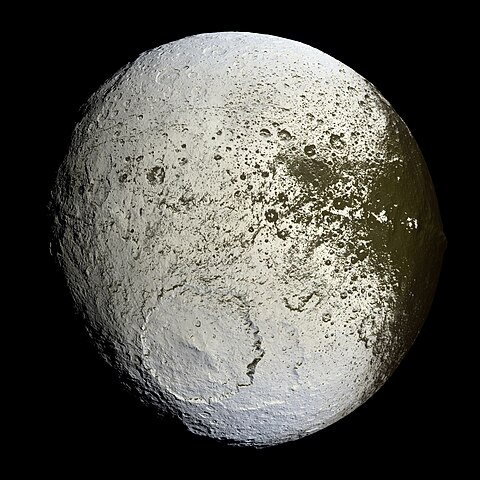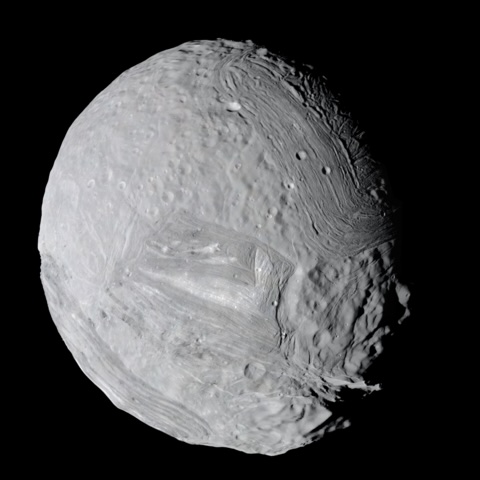1 day / second
0.5 AU
Puck
Moon of Uranus
A small, roughly spherical moon discovered by Voyager 2 in 1985 that orbits relatively close to Uranus and is heavily cratered with one prominent impact crater named Bogle.
Key Facts
learn more | Wikipedia |
mass | 1.9100e+18 kg |
radius | 40.5 km |
semi-major axis | 86,004.444 km |
eccentricity | 0 |
inclination | 82.549º |
longitude of the ascending node | 0º |
argument of periapsis | 0º |
orbital period | 18.288 hours |
surface gravity | 0.008 g |
discovery date | December 30, 1985 |
discovered by | Stephen P. Synnott using Voyager 2 imagery |
name origins | Named after Puck, a mischievous sprite in English folklore and Shakespeare's "A Midsummer Night's Dream" |
dimensions | 162 km diameter (roughly spherical) |
albedo | 0.104 |
material composition | Primarily water ice with dark material |
density | 1.3 g/cm³ |
Parent Planet
Uranus
A cold, blue-green ice giant planet tipped nearly sideways on its axis, with a set of narrow rings and a family of at least 27 moons named after literary characters.










